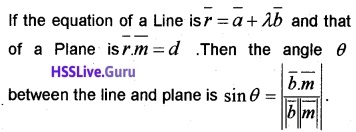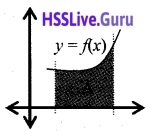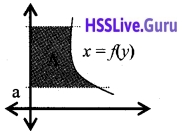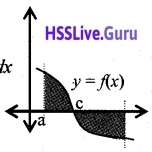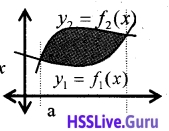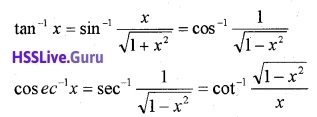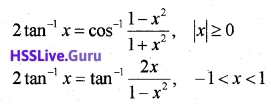Students can Download Chapter 16 Chemistry in Everyday Life Notes, Plus Two Chemistry Notes helps you to revise the complete Kerala State Syllabus and score more marks in your examinations.
Kerala Plus Two Chemistry Notes Chapter 16 Chemistry in Everyday Life
Drugs and their Classifcation
Drugs- chemicals of low molecular masses which interact with macromolecular targets and produce a biological response. When this response is therapeutic and useful, these chemicals are called medicines. Medicines are used in diagnosis, prevention, and treatment of diseases. Chemotherapy – Use of chemicals for therapeutic effect.
1. Classification of Drugs:
(a) On the Basis ofPharmacobgical Effect:
Provides them the whole reange of drugs available forthe treatment of a particular type of problem, useful to doctors, e.g. Analgesics – pain killing effect, Antiseptics – kill or arrest the growth of microorganisms.

(b) On the Basis of Drug Action:
Based on the action of a drug on a particular biochemical process, e.g. Antihistamines – inhibit the action of histamine.
(c) On the Basis of Chemical Structure:
Based on the chemical structure of the drug. These drugs share common structural features and often have similar pharmacological activity, e.g. Sulphonamides

(d) On the Basis of Molecular Targets:
Based on molecular targets, most useful for medicinal chemists. Drugs usually interact with biomolecules called target molecules or drug targets.
Drug-Target Interaction
Enzymes and receptros are important drug targets. Enzymes are proteins which perform the role of biological catalysts in the body. Receptors are proteins which are crucial to communication system in the body.
1. Enzymes as Drug Targets:
(a) Catalytic Action of Enzymes:
In their catalytic activity enzymes perform two major functions:
- To hold the substrate molecule in a suitable position, so that it can be attacked by the reagent effectively.
- To provide functional groups that will attack the substrate and carry out chemical reaction.

(b) Drug-Enzyme Interaction:
Drugs can block the binding site of the enzymes and prevent the binding of substrate, or can inhibit the catalytic activity of the enzyme. Such drugs are called enzyme inhibitors. This can be done in two different ways:
- Competitive Inhibitors: drugs which compete with the natural substrate for their attachment on the active sites of enzymes.
- Allosteric Site: sites other than the active site of the enzyme. Some drugs bind to the allosteric site of the enzyme which changes the shape of the active site in such a way that substrate cannot recognise it.
Receptors as Drug Targets:
Majority of the receptor proteins are embedded in the cell membrane in such a way that their small part possessing active site projects out of the surface of the membrane and opens on the outside region of the cell membrane.
Chemical messengers – Chemicals involved in the transmission of message between two neurons and that between neurons to muscles. These are received at the binding site of the receptor proteins. To accommodate a messenger, shape of the receptor site changes. This brings about the transfer of message into the cell.
Antagonists – drugs that bind to the receptor site and inhibit its natural function. These are useful when blocking of a message is required.
Agonists – drugs that mimic the natural messenger by switching on the receptor. These are useful when there is lack of natural chemical messenger.

Therapeutic Action of Different Classes of Drugs
1. Antacids:
Drugs which control acidity in stomach. In early times, antacids such as NaHCO3 or mixture of Al(OH)3 and Mg(OH)2 were used.
Histamine, stimulates the secretion of pepsin and hydrochloric acid in the stomach. Its discovery helped in the treatment of hyperacidity. The drug cimetidine (Tegamet) prevents the interaction of histamine with the receptors present in the stomach wall.
This resulted in release of lesser amount of acid. This drug was in use until another drug ranitidine (Zantac) was discovered.
2. Antihistamines:
Drugs which act against histamines, a potent vasodilator. It contracts the smooth muscles in the bronchi and gut and relaxes other muscles in the walls of fine blood vessels. It is also responsible for the nasal congestion associated with common cold and allergic response to pollen, e.g. Brompheniramine (Dimetapp), Terfenadine (Seldane) act as antihistamines.
3. Neurologically Active Drugs:
(a) Tranaquilizers:
Chemical compounds used for the treatment of stress and mild or even severe mental diseases. These relieve anxiety, stress, excitement by inducing a sense of well-being, e.g. Chlorodiazepoxide and meprobamate (mild tranquilizers suitable for relieving tension).

Antidepressant drugs – Drugs that inhibit the enzymes which catalyse the degradation of the important neurotransmitter, noradrenaline. Thus, noradrenaline is slowly metabolised and can activate its receptor for longer periods of time, thus counteracting the effect of depression.
e.g. Iproniazid, Phenelzine. Equanikised in controlling depression and hypertension.
Barbiturates – important class of tranquilizers which are derivatives of barbituric acid. These are hypnotic (sleep producing agents), e.g. veronal, amytal, nembutal, luminal and seconal.
(b) Analgesics:
Reduce or abolish pain without causing impairment of consciousness, mental confusion, incoordination or paralysis or some other disturbances of nervous system. They are two types,
(i) Non-narcotic Analgesics:
Drugs effective in relieving skeletal pain such as due to arthritis, also reduce fever (antipyretic), e.g. Aspirin, paracetamol. Aspirin is also used in the prevention of heart attacks because of its anti blood clotting action.
(ii) Narcotic Analgesic:
Drugs which releive pain and produce sleep in medicinal doses. In poisonous doses they produce stupor, coma, convulsions and ultimately death.They cause addiction, e.g. Morphine, Heroin, Codeine.
4. Antimicrobials:
Destroy/prevent development or inhibit the pathogenic action of microbes such as bacteria, fungi, virus or other parasites selectively. Antibiotics, antieptics and disinfectants are antimicrobial drugs.

(a) Antibiotics:
Chemical substances which are produced by microorganism/partly by chemical synthesis and are capable of destroying or inhibiting other micro organisms.
e.g. Salvarsan – Used in the treatment of syphilis. Antibiotics have either cidal(killing) effect ora static (inhibitory) effect on microbes.
| Bactericidal | Bacteriostatic |
| Pecilline | Erythromycin |
| Aminoglycosides | Tetracycline |
| Ofloxacin | Chloramphanicol |
Antibiotics are also classified into broad spectrum and narrow spectrum antibiotics based on their spectrum of action (range of bacteria or other microorganism that are affected by a certain antibiotic).
(1) Broad Spectrum Antibiotics:
Antibiotics which attack a wide range of Gram-positive and Gram-negative bacteria, e.g. Tetracyclin, steptomycin, chloramphenicol, vancomycin, ofloxacin etc. Ampicillin and Amoxycillin are synthetic modifications of pencillins. These have broad spectrum.
(2) Narrow Spectrum Antibiotics:
Effective mainly against Gram-positive or Gram-negative bacteria, e.g. Pencilline.
(3) Limited Spectrum Antibiotics: Antibiotics effective against a single organism or disease.
Dysidazirine – Antibiotic which is toxic towards certain strains of cancer cells.
(b) Antiseptic and Disinfectants:
Chemicals which either kill or prevent the growth of microorganisms. Antiseptics are applied to the living tissues such as wounds, cuts, ulcers and skin deseases. These are not injected like antibiotics, e.g. Furacine, soframidne.
- Dettol- Commonly used antiseptic, it is a mixture of chloroxylenol and terpineol.
- Bithional – added to soaps to impart antiseptic properties.
- Tincture iodine – 2 – 3% solution of iodine in alcohol-water mixture.
- Dilute aq. solution of boric add- weak antiseptic for eyes.
- Iodoform – antiseptic for wounds.

Disinfectants are applied to inanimate objects such as floors, drainage system, instruments, etc.
e.g. 1% of phenol, SO2 (in very low concentration) and Cl2 (0.2 to 0.4 ppm) are common disinfectants. Some substance can act as an antiseptic as well as disinfectant by varying concentration.
e.g. 0.2% phenol – antiseptic
1 % phenol – disinfectant.
5. Antifertility Drugs:
Drugs used to control population. Birth control pills essentially contain a mixture of synthetic estrogen and progesterone derivatives. Progesterone suppresses ovulation. Synthetic progesterone derivatives are more potent than progesterone. e.g. Norethindrone.
Ethynylestradbl(novestrol) – eastrogen derivative used in combination with progesterone derivative.

Chemicals in Food
Chemical are added to food for preservation, enhancing their appeal and adding nutritive value.
1. Artificial Sweetening Agents:
Chemical substances which give sweetening effect to food. Commonly used artificial sweetening agents: Aspartame – 100 times sweeter than cane sugar, methyl ester of dipeptide formed from aspartic acid and phenylalanine. Use of aspartame is limited to cold foods and soft drinks because it is unsatble at cooking temperature.
Saccharine – 550 times sweeter than cane sugar. It is the first popular artificial sweetening agent. It is excreted from the body in urine unchanged. It appears to be entirely inert and harmless when taken. Its use is of great value to diabetic persons and people who need to control in take of calories.
Sucrlose – 600 times sweeter than cane sugar. It is the trichloro derivative of sucrose. Its appearance and taste are like sugar. It is stable at cooking temperature. It does not provide calories.
Alitame – 2000 times sweeter than cane sugar. It is high potency sweetner. The control of sweetness of food is difficult while using it.
2. Food Preservatives:
They prevent spoilage of food due to microbial growth, e.g. Sugar, table salt, vegetable oils, sodium benzoate (C6H5 COONa), salts of sorbic acid, and propanoic acid.

Cleansing agents
Detergents and soaps are commonly used as cleansing agents.
1. Soaps:
Sodium/pottassium salts of higher fatty acids or long chain fatty acids like palmitic acid, stearic acid, oleic acid etc. Glyceryl ester of fatty acids is treated with aqueous NaOH solution. This reaction is known as saponification.
In this reaction, esters of fatty acids are hydrolysed and the soap obtained remains in colloidal form. Soap is precipitated from the solution by adding NaCI. Pottassium soaps are soft to the skin than sodium soaps. These can be prepared by using KOH solution in place of NaOH.
Types of Soaps
Toilet soap:
Prepared by using better grade of fats and oils with suitable soluble hydroxide. Colour and perfumes are added to make them more attractive.
Medicated soaps:
These contain substances of medicinal value. In some soaps deodorants are added, e.g. Shaving soaps contain glycerol to prevent rapid drying. A gum called rosin is added which forms sodium rosinate and lathers well.
Laundry soaps:
These contain fillers like sodium rosinate, sodium silicate, borax and soium carbonate. Hard water contains calcium and magnesium ions which form insoluble calcium and magnesium soaps respectively when sodium or potassium soaps are dissolved in hand water.
These insoluble soaps separate as scum in water and are useless as cleansing agent. This precipitate adheres onto the fibre of the cloth as gummy mass and hinders good washing.

2. Synthetic Detergents:
Cleaning agents which have all properties of soaps but actually do not contain any soap. These can be used both in soft and hard water. They are mainly classified into 3 categories.
- Anionic detergents: They are sodium salts of sulphonated long chain alcohols or hydrocarbons, e.g. Sodium dodecylbenzene sulphonate.
- Cationic detergents: They are quarternary ammonium salts of amines with acetate, chlorides or bromides as anions. Cationic part possess a long hydrocarbon chain and a positive charge on nitrogen atom. e.g. Cetyltrimethylammonium bromide.
- Non-ionic detergents: They do not contain any ion in their constitution, e.g. detergent formed by the reaction between stearic acid and polyethylene glycol. Liquid dishwashing detergents are non-ionic type.
The hydrocarbon chain of synthetic detergents is highly branched. Bacteria cannot degrade this easily. Slow degradation of detergents leads to their accumulation. The branching of the hydrocarbon chain is now a days controlled and kept to the minimum. Unbranched chains can be biodegraded more easily and hence pollution is prevented.

Supplementary Material
Antioxidants in Food:
These are important and necessary food additives which help in food preservation by retarding the action of oxygen on food. These are more reactive towards oxygen than the food material which they are protecting, e.g. Butylated Hydroxy Toluene (BHT), Butylated Hydroxy Anisole (BHA).
The addition of BHA to butter increases its shelf life from months to years. Sometimes BHT and BHA along with citric acid are added to produce more effect. Sulphur dioxide and sulphite are useful antioxidants for wine and beer, sugarsyrups and cut, peeled or dried fruits and vegetables.
![]()

![]()
![]()



![]()















